Ten Voices, One Choir
For Isabelle Métrope, Dominic Scarlatti’s “Stabat Mater” is an opportunity to spice up a concert in the field of early music.
When the conductor of the “Folkwang Vocalensemble” presented the singers, including Isabelle Métrope, with a ten-part piece last year, all the singers were enthusiastic. When he revealed that it was a piece by Domenico Scarlatti, everyone was surprised. Scarlatti? For vocal ensemble? Yes, the son of Alessandro. Like his father, Domenico wrote numerous works for harpsichord (over 550 sonatas), as well as stage works and sacred vocal music. The Stabat Mater is a work which particularly stands out amongst his entire output …
When the conductor of our “Folkwang Vocalensemble” presented us with a ten-part piece last year, all the singers were enthusiastic. But when he revealed that it was a piece by Domenico Scarlatti, everyone was surprised. Scarlatti? For vocal ensemble? Yes, the son of Alessandro. Like his father, Domenico wrote numerous works for harpsichord (over 550 sonatas), as well as stage works and sacred vocal music. The Stabat Mater is a work which particularly stands out amongst his entire output.
Like his father, Domenico wrote numerous works for harpsichord (over 550 sonatas), as well as stage works and sacred vocal music. The Stabat Mater is a work which particularly stands out amongst his entire output. The scoring (SSSSAATTBB, with basso continuo) shouldn’t be interpreted to mean double choir or a group soloists with one or another contrasting with the choir in sections: rather, all ten voices are of equal importance, and are combined in different groupings throughout the work. Even the four soprano voices, all of which have the exactly same vocal range, don’t divide into traditional pairs.
The Stabat Mater is not a work scored for mixed choir, but for ten voices, and it is also best performed by ten singers. The work is best suited to a small vocal ensemble both because of its level of difficulty and because of the transparency which is necessary for the voices, which are of equal importance. In the “Inflammatus”, for example, Scarlatti has a soprano and a tenor fight a duel – figuratively and theatrically, whilst the “chorus” turns directly to the Mother of God with a softer sound.
The recording by the Kammerchor Stuttgart conducted by Frieder Bernius is my benchmark recording here, as with many other vocal works. This CD also includes other works for unusual scorings with some heavenly-sounding, unexpected harmonic turns: there is the 16-part Lux Aeterna by György Ligeti and Mahler’s Ich bin der Welt abhanden gekommen and the less well-known, but no less interesting As I crossed a bridge of dreams, a meditative piece to nonsense texts by the Australian composer Anne Boyd.
Anyone who wants to spice up a Passiontide concert of early music with an unusual piece should definitely consider the Stabat Mater by Domenico Scarlatti. In addition, the piece requires just basso continuo accompaniment, which keeps the performance costs modest – and makes the effect produced by the voices alone even more captivating.
Isabelle Métrope studied music management, choral conducting and vocal teaching, and since September 2014 has worked at Carus in Marketing and New Media.


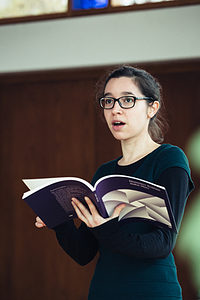
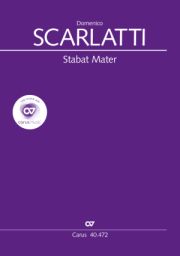
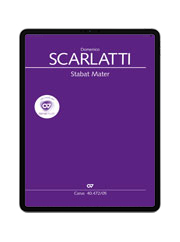
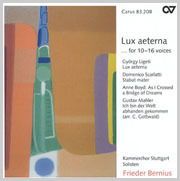
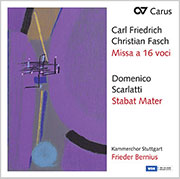

Leave a Reply
Want to join the discussion?Feel free to contribute!